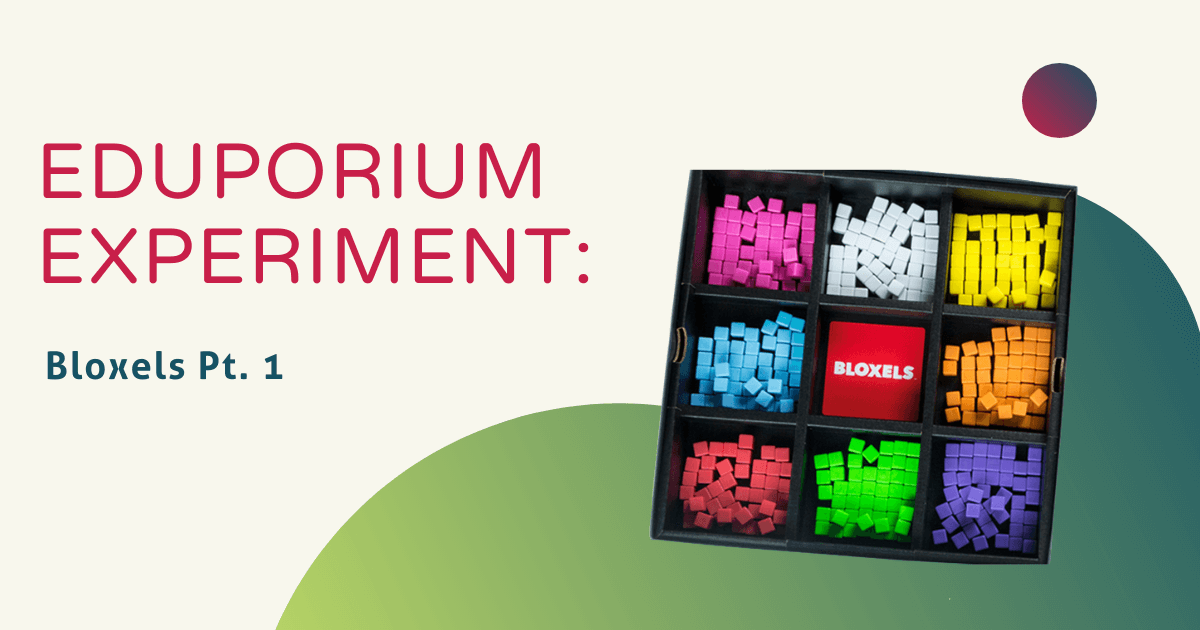If you’re a follower of these weekly blog posts, you may remember me mentioning that I studied video game design in college. I also taught game design for a bunch of years as an instructor at a couple of summer camps in the Boston area, and I am a firm believer in the educational potential of game design, especially with the huge focus on STEM skills these days. Game design teaches not only artistic creativity, but programming, logical thinking, storytelling, problem-solving, and flexibility as well. The continually evolving nature of the game design industry keeps creators on their toes and the constantly revolving popularity of game design platforms means that developers need to be comfortable with a wide array of computer applications.
One of the struggles I ran into as a game design instructor was how to keep the kids I was teaching engaged in the task at hand without getting constant requests to use their computer for other things (like Minecraft or the Web games—kids love to play). Game design is lots of fun, but it’s also very challenging and it can sometimes be hard to overcome an obstacle if students have been struggling with it for a little while. I also found that some of my students would sometimes get antsy after so many hours of sitting in front of a screen. I tried to unplug them as often as possible, encouraging them, for example, to draw out their levels on paper, but there’s really only so far you can take those kinds of activities before you have to turn back to a screen.
This week, when I opened up our brand new Bloxels set, I realized very quickly the boundless potential that this new kind of approach to game design would afford instructors who struggle with the same problems I faced in my classroom. I’ve never seen anything like it! Bloxels puts game design literally in the hands of students, encouraging real-world interaction with their game design like never before. With the simple camera and app technology found in every smart device, students can take designs for levels, characters, and much more from the real world and transform them into a digital format before implanting right into an actual video game! It’s easy, fun, and has endless potential for teaching kids extremely valuable STEM skills!
The Bloxels set is simple in its design. Its small, plastic blocks of different colors can be placed on a 13x13 grid and, with a simple snap of the camera, transferred into the Bloxels app to become whatever kids can dream up! I started off by building a simple level design, using all of the different colored blocks—the Bloxels app translates each of these different colors to build a new element of the game.
Green, for example, represents terrain (like grass), red represents hazards, blue depicts water, yellow serves as coins, and so on. Kids can use the board to build any kind of asset they want! The photo above shows one level, but the brightly-colored and fully-illustrated manual also shows kids how they can create—and animate—player characters, enemies, and other environmental objects to make their game truly their own.
Once I built my level in 3D space, I brought it into the Bloxels app to give it some life and test it out. Using the default “skins” the app provides, I was able to make my level look like something I could easily see myself buying online or that I made in one of my college classes. With the easy-to-use in-game controls, I ran, jumped, and swam my way through the level I created, collecting coins and power-ups and defeating enemies along the way.
I could write pages and pages about how awesome I think the Bloxels is especially its potential in STEM education, but I’ll stop myself here for now. If your students love video games, definitely get them into this creative and innovative educational platform, which could easily lead to a future career in any number of development areas, and watch them become creators as they master a whole new set of skills right before your eyes while having a ton of fun!
To purchase a Bloxels game builder kit and help kids learn essential coding skills, visit the Eduporium store. If you have an idea for an EdTech product you’d like to see featured on the Eduporium Experiment, let us know by sending us a message on Twitter or Facebook! Plus, look out for next week’s edition of the Eduporium Experiment featuring ChIP!



